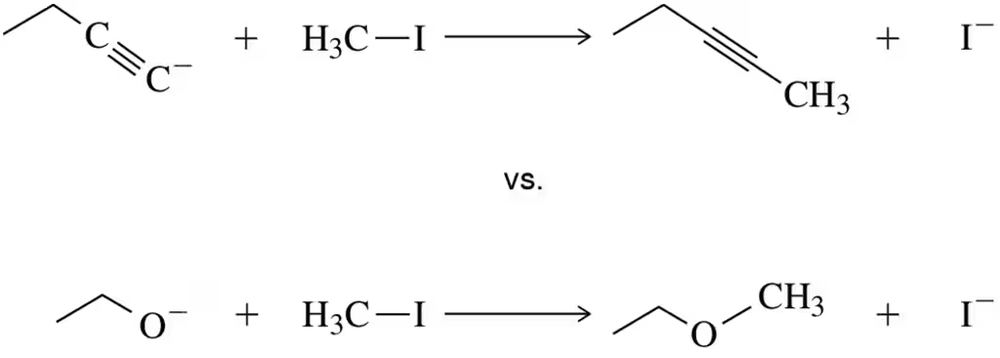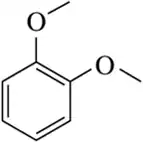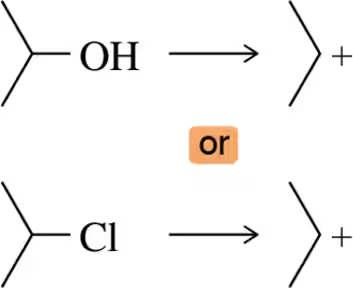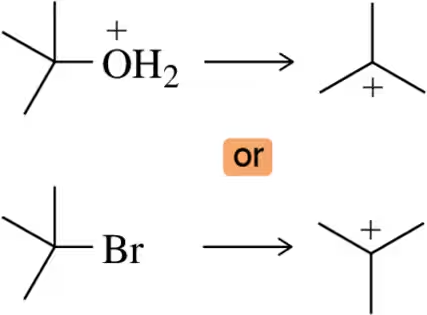 Back
BackProblem 16
Even with an excess of cyanide, only one equivalent will react with the following dibromoalkane. To which carbon will the cyanide add? Predict the product and explain your choice.
Problem 17
Order the following molecules on the basis of their nucleophilic strength using the pKₐ values of their conjugate acids.
Problem 18a
For each pair, choose the more reactive nucleophile.
(a)
Problem 18b
For each pair, choose the more reactive nucleophile.
(b)
Problem 19
Which SN2 reaction would you expect to be faster? Explain your answer.
Problem 20a
Would the following nucleophiles be more likely to participate in an SN1 or SN2 reaction?
(a)
Problem 20b
Would the following nucleophiles be more likely to participate in an SN1 or SN2 reaction?
(b) F-
Problem 20c
Would the following nucleophiles be more likely to participate in an SN1 or SN2 reaction?
(c)
Problem 20d
Would the following nucleophiles be more likely to participate in an SN1 or SN2 reaction?
(d) NH3
Problem 20e
Would the following nucleophiles be more likely to participate in an SN1 or SN2 reaction?
(e) H2O
Problem 20f
Would the following nucleophiles be more likely to participate in an SN1 or SN2 reaction?
(f)
Problem 21a
Identify the following solvents as polar protic, polar aprotic, or nonpolar.
(a)
Problem 21c
Identify the following solvents as polar protic, polar aprotic, or nonpolar.
(c)
Problem 21e
Identify the following solvents as polar protic, polar aprotic, or nonpolar.
(e)
Problem 22a
Which nucleophile would be more reactive in the solvent given?
(a)
Problem 22b
Which nucleophile would be more reactive in the solvent given?
(b)
Problem 22c
Which nucleophile would be more reactive in the solvent given
(c)
Problem 23
Will the following SN2 reaction proceed more rapidly in DMSO or H2O?
Problem 24a
Formation of the carbocation should be fastest for which leaving group?
(a)
Problem 24b
Formation of the carbocation should be fastest for which leaving group?
(b)
Problem 24c
Formation of the carbocation should be fastest for which leaving group?
(c)
Problem 25a
Which of the following is the better leaving group in a polar aprotic solvent?
(a) HO⁻ vs. F⁻
Problem 25b
Which of the following is the better leaving group in a polar aprotic solvent?
(b)
Problem 25c
Which of the following is the better leaving group in a polar aprotic solvent?
(c) Br ⁻ vs. I ⁻
Problem 26
Which reaction would be faster, the one with DMSO as the solvent or the one with ethanol (EtOH)?
Problem 27
The following reaction, though run under standard solvolysis conditions, occurs via an SN2 reaction. Why?
Problem 28a
For each solvent, indicate the most likely substitution reaction to take place.
(a)
Problem 28b
For each solvent, indicate the most likely substitution reaction to take place.
(b)
Problem 28d
For each solvent, indicate the most likely substitution reaction to take place.
(d)
Problem 28e
For each solvent, indicate the most likely substitution reaction to take place.
(e)

























